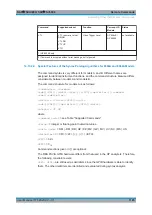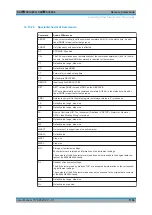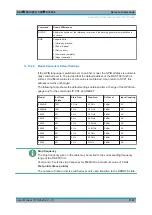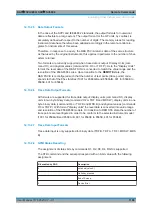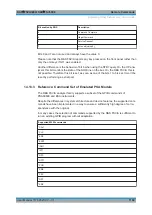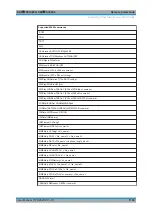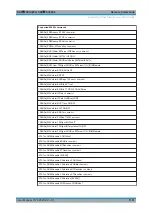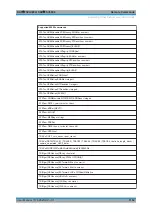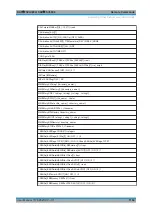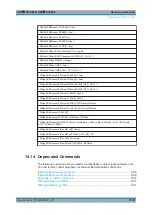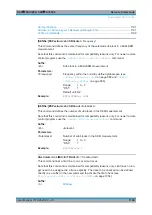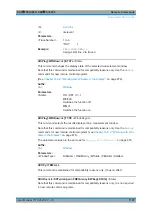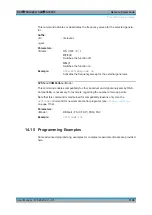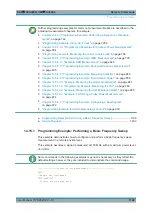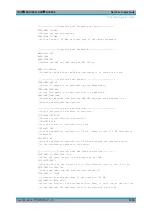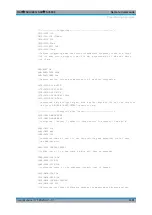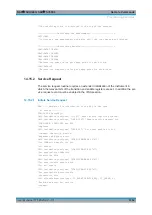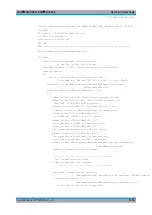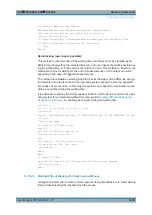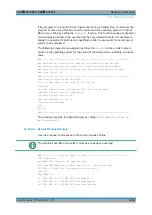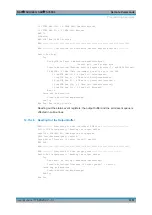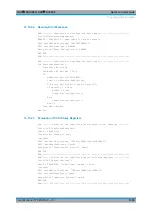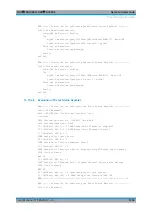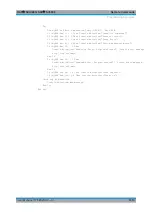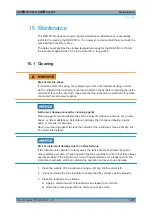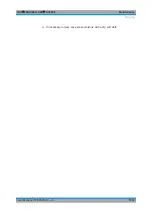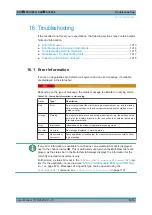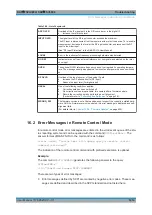
Remote Commands
R&S
®
FSVA3000/ R&S
®
FSV3000
1199
User Manual 1178.8520.02 ─ 01
Further programming examples for common measurement tasks are described in the
individual measurement chapters, for example:
●
Chapter 14.4.3, "Programming Example: Performing a Sequence of Measure-
ments"
●
"Programming Example: Using Limit Lines"
●
Chapter 14.5.3.10, "Programming Examples for Channel Power Measurements"
●
"Programming example: Measuring the carrier-to-noise ratio"
●
Chapter 14.5.5.2, "Programming Example: OBW Measurement"
●
Chapter 14.5.6.11, "Example: SEM Measurement"
●
Chapter 14.5.7.7, "Programming Example: Spurious Emissions Measurement"
●
Chapter 14.5.8.7, "Programming Example: Measuring Statistics"
●
Chapter 14.5.9.4, "Programming Example: Time Domain Power"
●
Chapter 14.5.10.5, "Example: Measuring the Harmonic Distortion"
●
Chapter 14.5.11.2, "Programming Example: Measuring the TOI"
●
Chapter 14.5.12.2, "Example: Measuring the AM Modulation Depth"
●
Chapter 14.5.14.2, "Example: Performing a Pulse Power Measurement"
●
Chapter 14.8.2.7, "Programming Example: Configuring a Spectrogram"
●
"Programming Example for External Generator Control"
Programming Example: Performing a Basic Frequency Sweep
......................... 1199
14.15.1
Programming Example: Performing a Basic Frequency Sweep
This example demonstrates how to configure and perform a basic frequency sweep
measurement in a remote environment.
This example assumes a signal is measured at 100
MHz, with a maximum power level
of -3
dBm.
Some commands in the following examples may not be necessary as they reflect the
default settings; however, they are included to demonstrate the command usage.
//--------------Preparing the measurement ---------------------
*RST
//Resets the instrument
INIT:CONT OFF
//Selects single sweep mode.
Programming Examples

